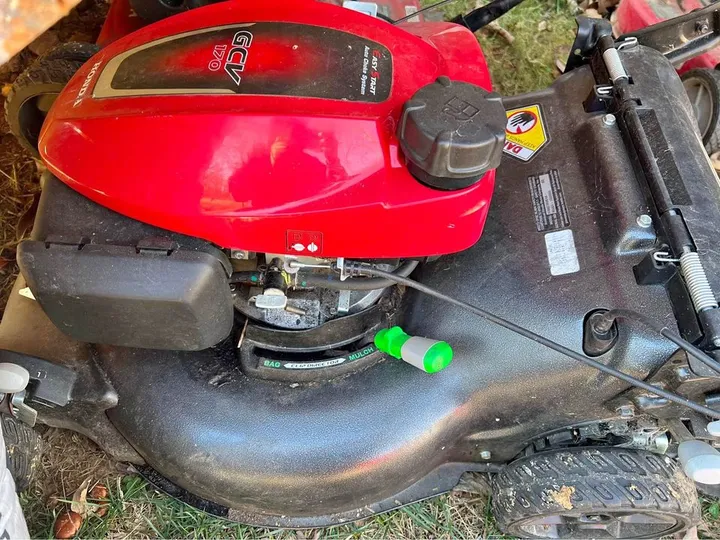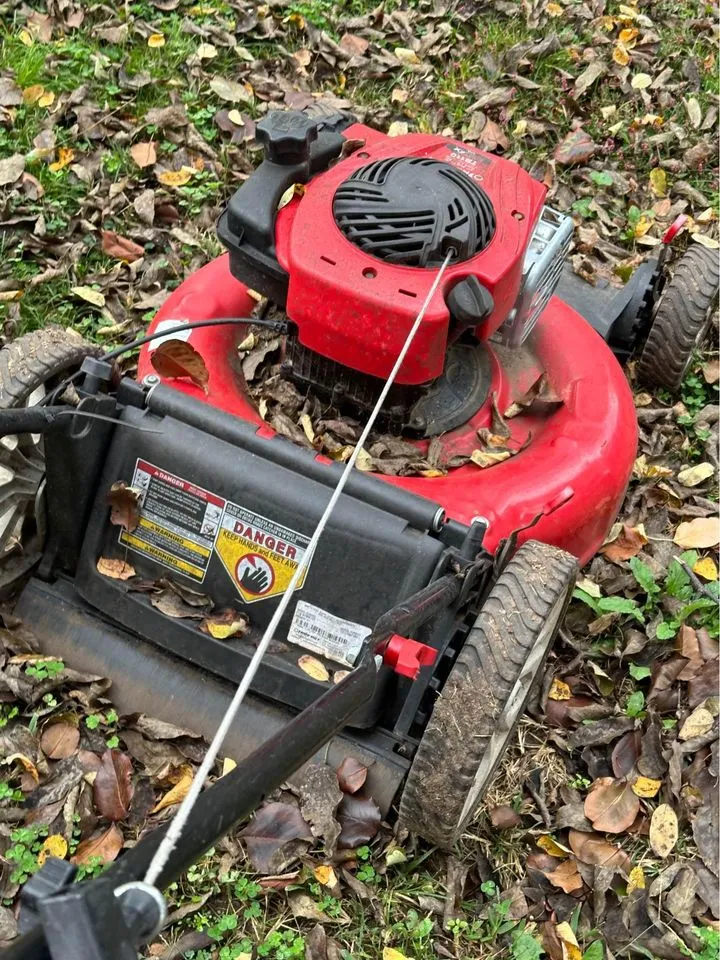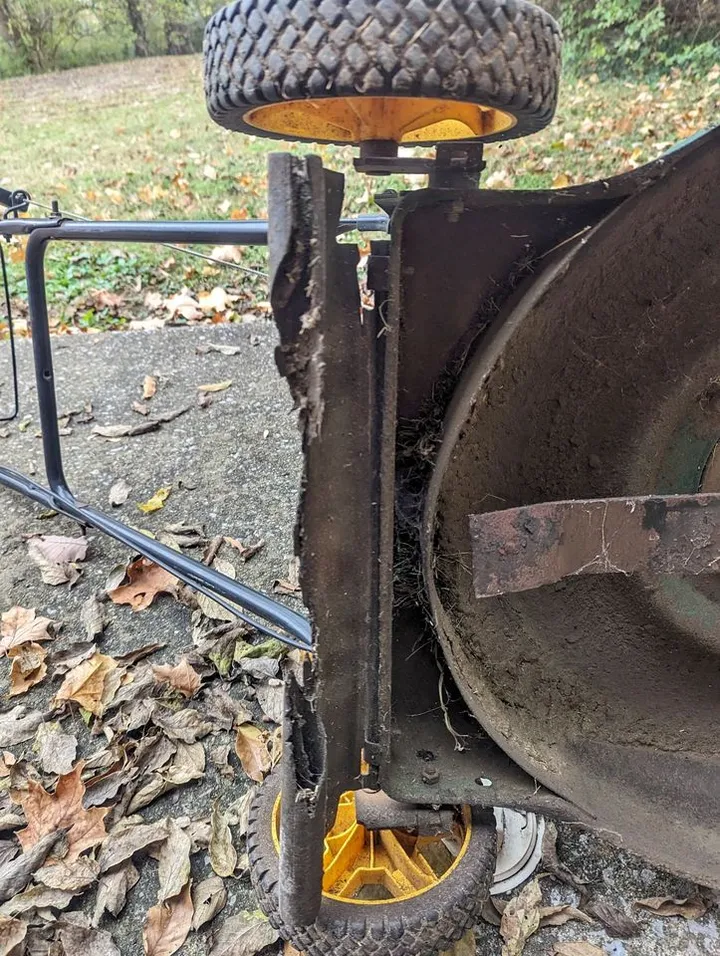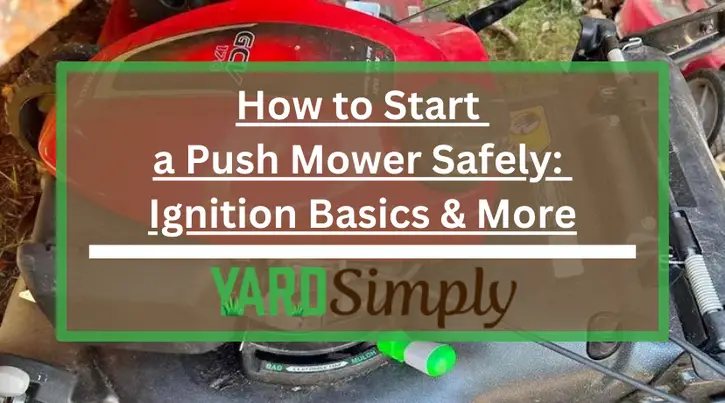Starting a push lawn mower may seem daunting, but with the right technique, it can be a swift and efficient process.
As a seasoned lawn care expert with years of experience in maintaining and troubleshooting garden equipment, I’m here to guide you through the essential steps for igniting your mower’s engine.
My hands-on knowledge ensures that you’ll receive practical advice that has been tested in the field, not just theory. By following my instructions, you’ll quickly transform your mower from a silent machine into a dependable ally for your lawn care needs.
Trust in my expertise, and let’s get your mower started without any unnecessary complications or delays.
Quick Summary
- To start a push lawn mower, press the primer bulb, set the choke and throttle, and pull the starter cord firmly.
- Regular cleaning of the spark plug and air filter is essential for efficient starting and operation of the mower.
- According to consumer surveys, regular maintenance can increase the lifespan of a push lawn mower by up to 50%.
- In my experience, consistent maintenance transforms starting a lawn mower from a chore into a simple, satisfying task.
How to Start a Push Lawn Mower
Before I get my mower humming, I make sure it’s in the right spot and double-check the petrol’s topped off.
I also take a quick look at the oil level because running with too little can spell trouble for the engine.
Lastly, I give the spark plug a once-over and prim the engine by hitting the fuel button a few times; these small steps can make a big difference in getting started.
Related Articles:
- Husqvarna Zero Turn Won’t Start: Solutions
- Toro Zero Turn Won’t Start: How to Solve
- Bad Boy Mower Starts Then Dies
- Why Won’t My Push Mower Start
Positioning the Lawn Mower
To ensure a smooth start, I position my push lawn mower on a flat, even surface clear of debris and obstacles. This isn’t just about the immediate task at hand; it’s part of a larger commitment to mower maintenance, ensuring every aspect is up to snuff.
Also Read: How to Use a Push Mower Safely: Guide and Useful Tips
Pressing the Fuel Button Three to Five Times
To ensure a smooth start, I press the fuel primer button on my push lawn mower three to five times before pulling the starter cord. Grasping the fuel priming basics is crucial—it prepares my mower for a successful ignition.
Knowing the button location importance, I find it easily without fumbling, usually situated around the carburetor.
The primer button function is to deliver gas directly to the carburetor, making starting my mower a breeze.
Each press evokes the reassuring sound of fuel moving, a promise of the engine roaring to life.
Post-start, maintenance after starting is simpler because the engine isn’t gasping for fuel.
As the seasons change, these seasonal starting tips save me time and prevent frustration.
Adjusting the Choke for Weather Conditions

Adjusting the choke is a key step in starting your lawn mower, particularly in colder weather. The choke helps enrich the fuel mixture in the engine, facilitating easier starts in cool temperatures.
When you start the mower, close the choke to enrich the fuel-air mix, and then gradually open it as the engine warms up. This adjustment can significantly improve your mower’s starting performance and prevent stalling in colder conditions.
Setting the Throttle to Start Position
Once the fuel primer button has been pressed, I set the throttle to the start position to facilitate the engine’s ignition. This is a crucial step in starting my mower, especially during a cold start.
Before firing up the engine, I always ensure that the throttle lever is secure and functioning properly; this is part of routine throttle maintenance. If it’s a colder day, seasonal adjustments may be necessary to aid in starting the mower.
I give the throttle lever an extra check for safety, making sure it’s not stuck, which could be dangerous once the engine is running.
If I’m having trouble with the throttle response, I’ll do some troubleshooting, looking for any signs of wear or damage that might hinder the starting process.
Pulling the Starter Cord

With the throttle set to the start position, I grasp the mower’s starter cord handle firmly and pull sharply to engage the engine. I’ve learned the importance of proper technique; it’s not just about brute strength but a quick, smooth motion.
Adhering to safety precautions is critical to prevent injuries. I’m always careful to keep my feet clear of the blade, even when it’s not moving.
Also Read: Push Mower Starts Then Dies: Causes & Solutions
Begin Mowing the Lawn
I check the mower’s settings one final time before pushing forward.
I’m mindful of the grass types beneath my mower’s blades, knowing that each variety has its ideal height. Seasonal maintenance isn’t just about starting up; it’s about adjusting my approach with the changing weather.
Today, I opt for a simple back-and-forth mowing pattern, ensuring efficient coverage and a clean look. As I progress, I’m careful to direct clippings away from flower beds, mindful of clipping disposal.
Safety precautions are always at the forefront of my mind—I’m wearing sturdy shoes and eye protection.
Safety Measures During Starting Process
Safety is paramount when starting and operating your push lawn mower. Always start the mower on a stable, flat surface to prevent unintended movement. Keep your feet and other body parts away from the blade area, even when the blades are stationary.
Follow the manufacturer’s instructions for the starting process carefully, and wear appropriate protective gear, such as gloves and sturdy shoes. This cautious approach helps prevent accidents and ensures a safer mowing experience.
Emptying the Fuel Tank Regularly
It’s essential to regularly empty and refresh the fuel in your push lawn mower’s tank, especially after periods of inactivity. Old or stale fuel can degrade, leading to starting difficulties and potential damage to the engine.
At the end of the mowing season or before extended storage, drain the fuel tank and refill with fresh gasoline when you’re ready to use the mower again.
This simple step helps prevent issues like carburetor clogging and engine corrosion, ensuring your mower starts smoothly every time.
Cleaning the Spark Plug and Air Filter
Keeping the spark plug and air filter clean is crucial for hassle-free starting of your lawn mower. A dirty spark plug can cause ignition problems, while a clogged air filter restricts airflow, both hindering the mower’s ability to start efficiently.
Clean the spark plug with a wire brush and inspect it for damage, replacing it if necessary. For the air filter, follow the manufacturer’s instructions for cleaning or replacement.
These maintenance steps ensure better airflow and ignition, leading to easier starting and optimal mower performance.
Blade Maintenance

Proper maintenance of the mower blades is essential for easy starting and effective operation. Dull, damaged, or debris-laden blades can overburden the engine, making it more difficult to start and less efficient during use.
Regularly inspect and sharpen the blades, and clear any debris, to ensure they are in top condition. Well-maintained blades not only facilitate smoother starting but also contribute to a cleaner, more uniform cut of your lawn.
Related: Best Blades for Bad Boy
Our Verdict
Starting my push lawn mower is no longer a task I dread. By following the steps I’ve laid out, it’s become a quick and satisfying routine. It’s all about the preparation: ensuring the fuel is fresh, the oil level is right, and the air filter and spark plug are clean.
I’ve learned these small steps make a huge difference.
I position my mower on a flat surface, press the primer bulb a few times, and give the starter cord a firm pull. I can’t stress enough how adjusting the choke in colder weather or keeping the blades well-maintained contributes to a smooth start every time.
And, let’s not forget about safety, which is always a priority.
Frequently Asked Questions
What should I do if my push lawn mower starts but then suddenly dies?
If my mower starts then dies, I’ll check for an air filter blockage, clean the carburetor, adjust the throttle, ensure the oil level’s right, and investigate any safety switch malfunctions.
How can I tell if the problem is with the fuel or the spark plug when my mower won’t start?
I’ll check the fuel quality first, then perform a spark test. If it’s not those, I’ll look for airflow blockage and do a compression check to rule out ignition system issues.
Is it safe to start a push lawn mower on an incline, or should I move it to flat ground first?
I’d say it’s best to start on flat ground due to slope considerations. Safety measures are key, so manual positioning on stable ground minimizes incline challenges and ensures better ground stability.
Can old gasoline be the reason my push lawn mower won’t start, and how should I dispose of it?
Yes, old gasoline can cause starting issues due to fuel degradation. I’ll properly dispose of it, considering environmental concerns, and use storage tips and gasoline additives to prevent this problem in the future.
What routine maintenance should I perform to avoid starting issues with my push lawn mower in the future?
To maintain my mower, I regularly check engine lubrication, clean the air filter, sharpen the blade, follow proper storage tips, and schedule seasonal servicing to prevent future starting issues.


